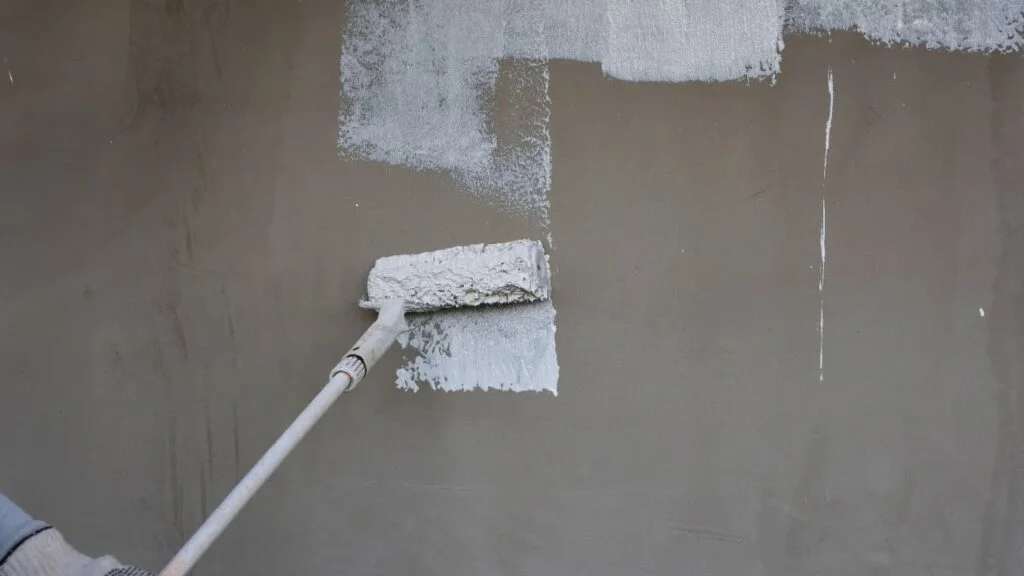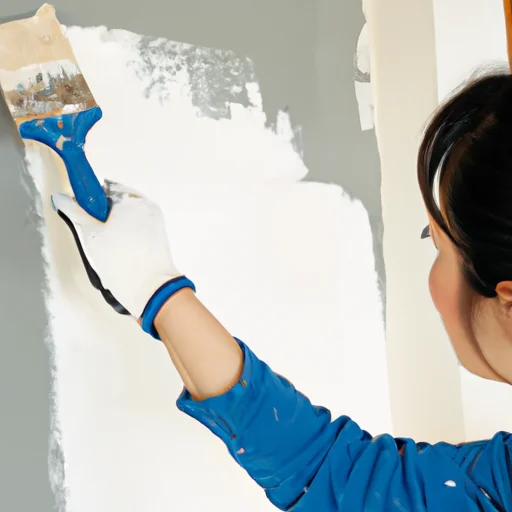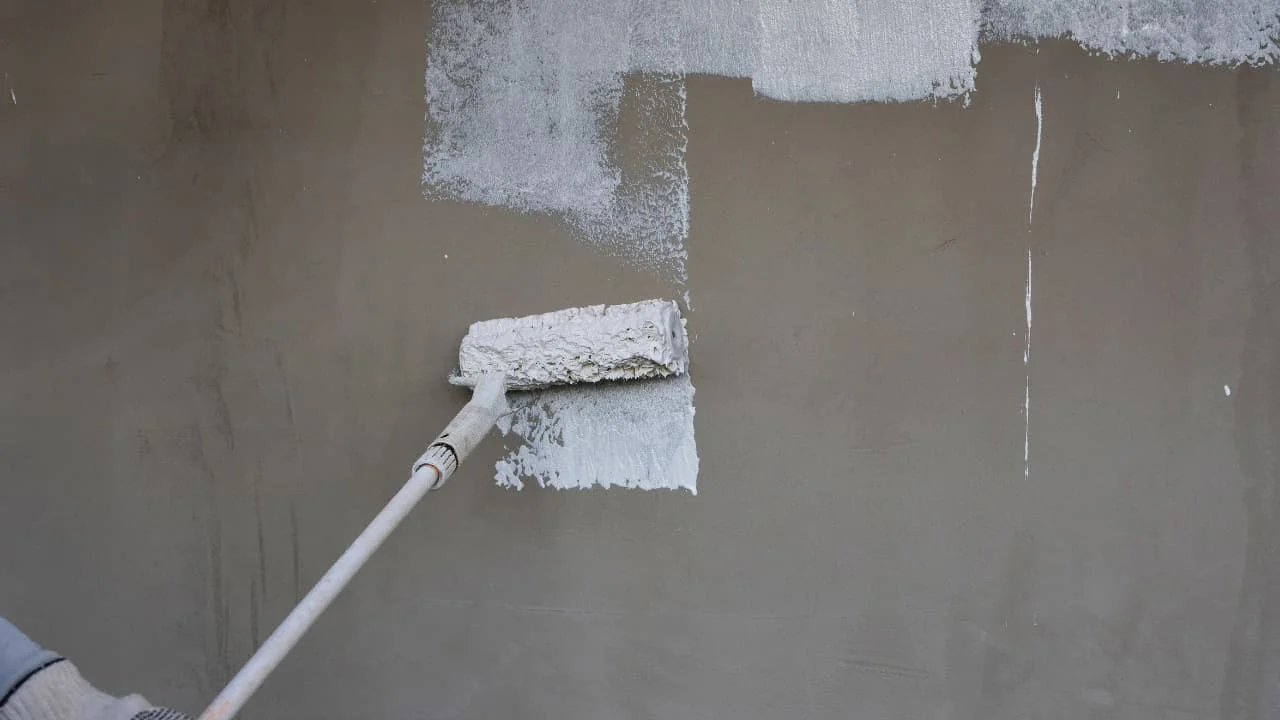Welcome to the world of home improvement, where the transformative power of paint awaits! One of the essential players in the realm of coatings, and the star of our journey today, is primer paint. Often overlooked, yet undeniably crucial, primer paint acts as the unsung hero that sets the stage for a flawless finish.
Whether you’re a seasoned DIY enthusiast or just dipping your brush into the colorful world of painting, understanding what primer paint is and why it’s an indispensable part of any painting project will unlock the door to a world of boundless possibilities. So, let’s dive into the realm of primer paint and discover its remarkable impact on achieving a truly picture-perfect result for your walls, furniture, and more.


Table of Contents
What is primer paint?
Definition of primer paint
Primer paint is a preparatory coating applied to surfaces before the application of the final paint layer. It is specifically formulated to enhance the adhesion of paint to the surface, improve the coverage of the topcoat, and provide added protection to the substrate. Primer paint is typically referred to as the “foundation” of a paint job, as it sets the stage for a successful and long-lasting finish.
Purpose of primer paint
The primary purpose of primer paint is to create a smooth and uniform surface for the paint to adhere to. By sealing the surface and providing a consistent base, primer paint helps prevent paint peeling, cracking, and flaking. Additionally, it can enhance the appearance of the final finish by improving color vibrancy and depth. Primer paint also acts as a barrier, preventing the migration of tannins, water, and other substances that can cause discoloration or damage to the topcoat.
Types of primer paint
There are various types of primer paint available, each designed for specific surfaces and applications. Some common types include:
- Universal primer: This type of primer is suitable for most surfaces, including wood, metal, and masonry. It provides good adhesion and coverage, making it a versatile option.
- Wood primer: Designed specifically for wooden surfaces, wood primer helps seal the pores and protects the wood from moisture, rot, and decay. It also enhances the paint adherence and prevents tannin bleed-through.
- Metal primer: Metal primer is formulated to provide excellent adhesion to metal surfaces, preventing rust and corrosion. It typically contains anti-corrosive agents and offers good resistance to weathering and moisture.
- Masonry primer: Masonry primer is formulated for use on concrete, brick, and other porous surfaces. It helps seal the surface, promotes better adhesion, and prevents efflorescence, which is the tendency of minerals to migrate to the surface and cause discoloration.
Benefits of using primer paint
Using primer paint offers several advantages in the painting process:
- Improved adhesion: Primer paint enhances the bond between the paint and the surface, ensuring better adhesion and longevity of the finish.
- Enhanced coverage: Primer paint helps the topcoat achieve better coverage, reducing the number of paint coats needed for full opacity.
- Seals and protects: Primer paint acts as a protective barrier, sealing the surface and preventing moisture, stains, and other substances from penetrating into the substrate.
- Improved color vibrancy: By providing a consistent base, primer paint enhances the color vibrancy and richness of the topcoat.
- Better paint durability: Primer paint enhances the durability and resistance of the paint, making it more resistant to chipping, peeling, and fading.
How does primer paint work?
Primer paint composition
Primer paint is composed of several key components that work together to promote adhesion and create a smooth surface for the topcoat. These components can vary depending on the type of primer, but common ingredients include:
- Binders: Binders are responsible for holding the primer’s pigments and other components together. They form a continuous film that helps seal the surface and enhance adhesion.
- Pigments: Primer paint pigments provide opacity and color to the primer layer. They also aid in hiding imperfections and evening out the surface.
- Solvents: Solvents are used to dissolve the binders, pigments, and other additives, allowing for easy application and film formation. They evaporate during the drying process.
- Additives: Various additives are incorporated into primer paint formulations to improve specific properties. These can include anti-foaming agents, anti-settling agents, and flow control agents, among others.
Chemical reactions in primer paint
During the application and drying process, primer paint undergoes several chemical reactions that contribute to its adhesion and bonding properties. When the primer is applied to the surface, it starts to dry through the evaporation of solvents. As the solvents evaporate, the binders in the primer begin to coalesce and form a continuous film.
Once the primer film is formed, it begins to cure through a process called crosslinking. Crosslinking occurs when the binder molecules chemically react with each other or with other components in the paint, creating a network of interconnected molecules. This network provides the primer with strength and durability.
Primer paint application process
The application of primer paint is a crucial step in the painting process. The surface should be clean, dry, and free from dust, grease, and other contaminants before applying the primer. It is recommended to sand the surface lightly to create a slightly rough texture, which can aid in the primer’s adhesion.
The primer can be applied using various methods, including brushes, rollers, or sprayers. It should be evenly spread over the surface, ensuring complete coverage. Multiple coats may be required, depending on the surface condition and the desired level of adhesion and coverage.
Drying and curing of primer paint
Primer paint typically dries to the touch within a few hours of application, but the complete curing process may take up to 24 hours or longer, depending on environmental conditions such as temperature and humidity. It is important to allow the primer to fully cure before applying the topcoat to ensure optimal adhesion and performance.
During the drying and curing process, the solvents in the primer evaporate, leaving behind a solid film of binder and additives. As the binder molecules crosslink, the primer paint gains strength and develops its protective properties, preparing the surface for the application of the topcoat.
When to use primer paint?
Preparation of surfaces
Primer paint should be used when preparing surfaces for painting, especially when dealing with porous or challenging substrates. It helps seal the surface, promotes better adhesion, and prevents stains or contaminants from bleeding through the topcoat.
New construction projects
In new construction projects, primer paint is essential to create a smooth and uniform surface for the final paint application. It helps fill pores, hide imperfections, and ensure the longevity and durability of the finish.
Repainting or refreshing surfaces
When repainting or refreshing surfaces, primer paint is particularly useful if the existing paint is worn, peeling, or uneven. It helps provide a consistent base for the new paint and improves its adherence and coverage.
Difficult surfaces that require special treatment
Primer paint is often required for difficult surfaces that require special treatment, such as previously unpainted metal, glossy finishes, or surfaces with high tannin content. These surfaces can be challenging for paint to adhere to, making primer paint crucial for achieving a successful and long-lasting finish.


Choosing the right primer paint
Surface considerations
When selecting primer paint, it is important to consider the type of surface being painted. Different surfaces may require different types of primer. For example, wood surfaces may require a wood primer, while metal surfaces may need a metal primer.
Primer paint compatibility
Primer paint should be compatible with the topcoat that will be applied. It is important to ensure that the primer and topcoat are from the same product line or are specifically recommended for use together. Using incompatible products can lead to adhesion issues and compromised performance.
Environmental factors
Environmental factors such as temperature and humidity can affect the drying and curing time of primer paint. It is crucial to select a primer that is suitable for the specific conditions in which the paint will be applied. Some primers are specifically formulated for use in high-humidity or low-temperature environments.
Drying time and coverage
The drying time and coverage of primer paint can vary between products. It is important to choose a primer that suits the project’s timeline and provides sufficient coverage with the desired number of coats. Considerations such as quick-drying primers or high-coverage primers can help streamline the painting process.
How to apply primer paint?
Surface Preparation
Before applying primer paint, the surface must be properly prepared. This includes cleaning the surface to remove dirt, dust, grease, and other contaminants. Any loose or flaking paint should be scraped or sanded away. The surface should also be dry and free from moisture.
Primer application techniques
Primer paint can be applied using different techniques depending on the surface and the desired finish. Brushes are commonly used for small areas and precise application, while rollers are suitable for larger surfaces. Sprayers can be used for both efficiency and a smooth finish. It is important to follow the manufacturer’s instructions for the recommended application technique.
Tools and equipment
The tools and equipment required for applying primer paint may include brushes, rollers, sprayers, paint trays, drop cloths, and masking tape. It is important to use clean and appropriate tools to ensure smooth and even application. Always refer to the manufacturer’s instructions for specific recommendations.
Safety precautions
When applying primer paint, it is important to take proper safety precautions. This includes wearing protective clothing, gloves, and goggles. Adequate ventilation should be provided by keeping windows or doors open or using fans. It is also important to avoid smoking or open flames near paint and solvents.
Common mistakes when using primer paint
Insufficient surface preparation
One common mistake when using primer paint is inadequate surface preparation. Failing to clean and prepare the surface properly can result in poor adhesion and paint failure over time. It is essential to take the time to properly clean, sand, and repair any imperfections before applying primer.
Inadequate primer thickness
Another common mistake is applying an insufficient amount of primer paint. The primer layer should be thick enough to fully cover the surface and provide a solid base for the topcoat. Applying too thin of a layer can result in uneven coverage, reduced adhesion, and compromised paint durability.
Incompatible primer and topcoat
Using incompatible primer and topcoat products can lead to adhesion issues and compromised performance. It is important to ensure that the primer and topcoat are specifically recommended for use together or are from the same product line. Mixing different brands or types of paint without proper compatibility testing can result in paint failure.
Skipping primer application
Skipping the primer paint step altogether is a common mistake when attempting to save time or money. While it may seem tempting, skipping the primer can lead to poor adhesion, uneven coverage, and premature paint failure. Investing the time and effort into proper surface preparation and primer application will ultimately result in a more durable and long-lasting paint job.
Troubleshooting primer paint issues
Peeling or cracking of primer
If the primer paint begins to peel or crack, it may be due to inadequate surface preparation or improper application. To address this issue, remove the peeling or cracked primer, properly prepare the surface, and reapply a new coat of primer. Ensure that the primer is applied evenly and has sufficient thickness for optimal adhesion.
Uneven application
Uneven application of primer paint can result in patches or streaks in the finish. This is usually caused by improper brush or roller technique. To resolve this issue, ensure that the primer is applied evenly and consistently using long, smooth strokes. It may be necessary to apply an additional coat of primer for a more uniform finish.
Poor adhesion to the surface
If the primer paint does not adhere well to the surface, it may be due to inadequate surface preparation or the use of an incompatible primer. To improve adhesion, thoroughly clean and prepare the surface, ensuring it is free from contaminants. If using an incompatible primer, it may be necessary to remove the primer and replace it with a suitable one.
Blistering or bubbling
Blistering or bubbling of primer paint can occur if moisture is trapped beneath the primer layer or if the surface was not properly dried before application. To address this issue, allow the surface to dry completely before applying primer. If blistering occurs, it may be necessary to remove the affected primer and reapply after ensuring the surface is completely dry.
Maintaining and caring for primer paint
Cleaning and maintenance tips
To maintain primer paint, regular cleaning and maintenance are essential. Use a mild detergent and a soft cloth or sponge to gently clean the painted surface. Avoid using abrasive cleaners or scrub brushes, as they can damage the primer and topcoat. Regularly inspect the painted surface for any signs of damage or deterioration and address them promptly.
Avoiding common damaging substances
Certain substances can damage primer paint if they come into contact with the surface. These include harsh chemicals, strong solvents, abrasive materials, and direct exposure to extreme heat or sunlight. It is important to avoid contact with these substances and provide adequate protection, such as using coasters or trivets for hot objects.
Repairing primer paint damage
In the event of primer paint damage, such as scratches or chips, it is possible to repair the affected area. Begin by lightly sanding the damaged area to create a smooth surface. Apply a touch-up coat of primer followed by the topcoat to match the surrounding area. Allow the paint to dry and cure according to the manufacturer’s instructions.
Regular inspection and touch-ups
Regularly inspecting the primer paint for any signs of wear and tear is important for maintaining its integrity. Look for areas that may have suffered damage or are showing signs of fading or discoloration. Address any issues promptly by performing touch-ups or applying a new coat of primer and paint as needed.
Comparing primer paint with other types of coatings
Primer vs. sealers
While both primer and sealers are used to prepare surfaces for paint, they serve slightly different purposes. Primer focuses on improving adhesion and enhancing the coverage of the topcoat, while sealers are primarily used to seal porous surfaces and prevent the migration of stains or contaminants. Primer is typically applied before any paint or stain, while sealers are generally applied as the final step.
Primer vs. undercoats
Undercoats, also known as basecoats, are typically used in automotive painting to enhance color depth and provide a smooth foundation for the topcoat. While both primer and undercoats provide surface preparation, primer is specifically designed for adhesion and sealing properties, whereas undercoats focus on improving the final appearance and color of the paint.
Primer vs. topcoats
Primer and topcoats serve different functions in the painting process. Primer prepares the surface for paint, providing better adhesion, coverage, and protection. Topcoats are the final colored or clear layers that provide the desired appearance and finish. While primer is necessary for optimal paint performance, topcoats contribute to the aesthetic aspect of a paint job.
Specialty primers for specific applications
In addition to general-purpose primer paints, there are specialty primers available for specific applications. These include stain-blocking primers, rust-inhibiting primers, and moisture-resistant primers, among others. Specialty primers are formulated to address specific challenges and provide enhanced performance in targeted situations.
Conclusion
Primer paint is a crucial component in the painting process, offering numerous benefits and ensuring a successful and long-lasting finish. By promoting adhesion, enhancing coverage, and providing protection, primer paint helps create a smooth and uniform surface for the topcoat.
Proper surface preparation, application, and maintenance are essential for optimal primer paint performance. By understanding the importance of primer paint and using it effectively, one can achieve professional-grade results in their painting projects.


